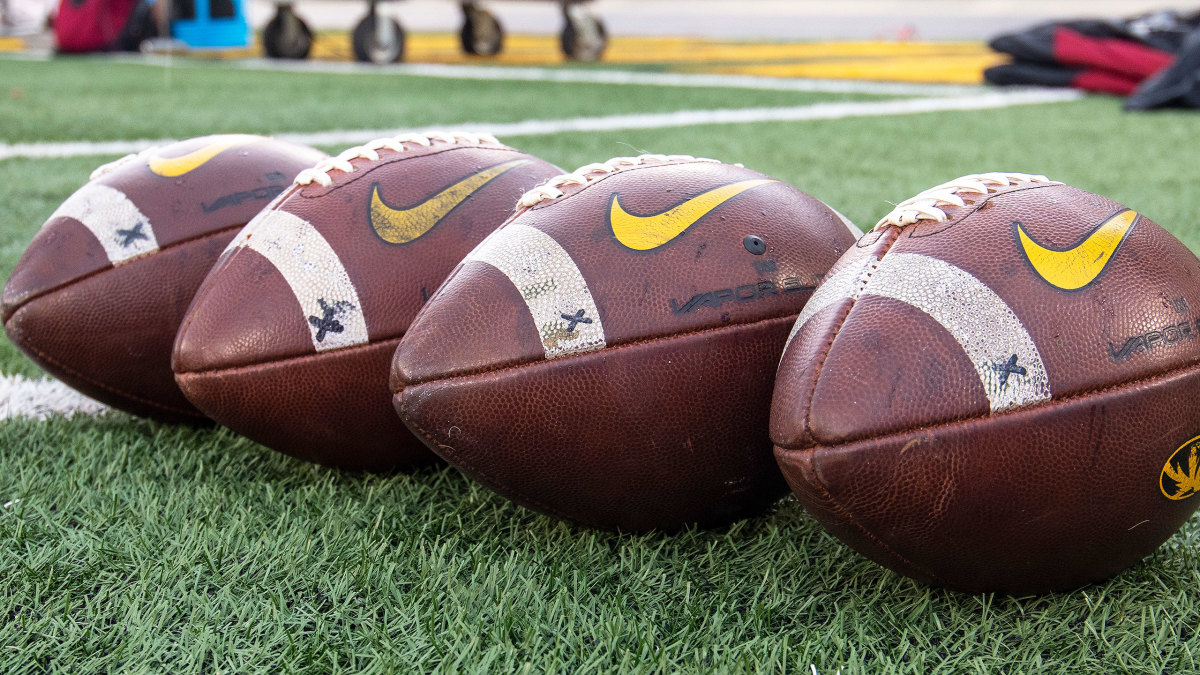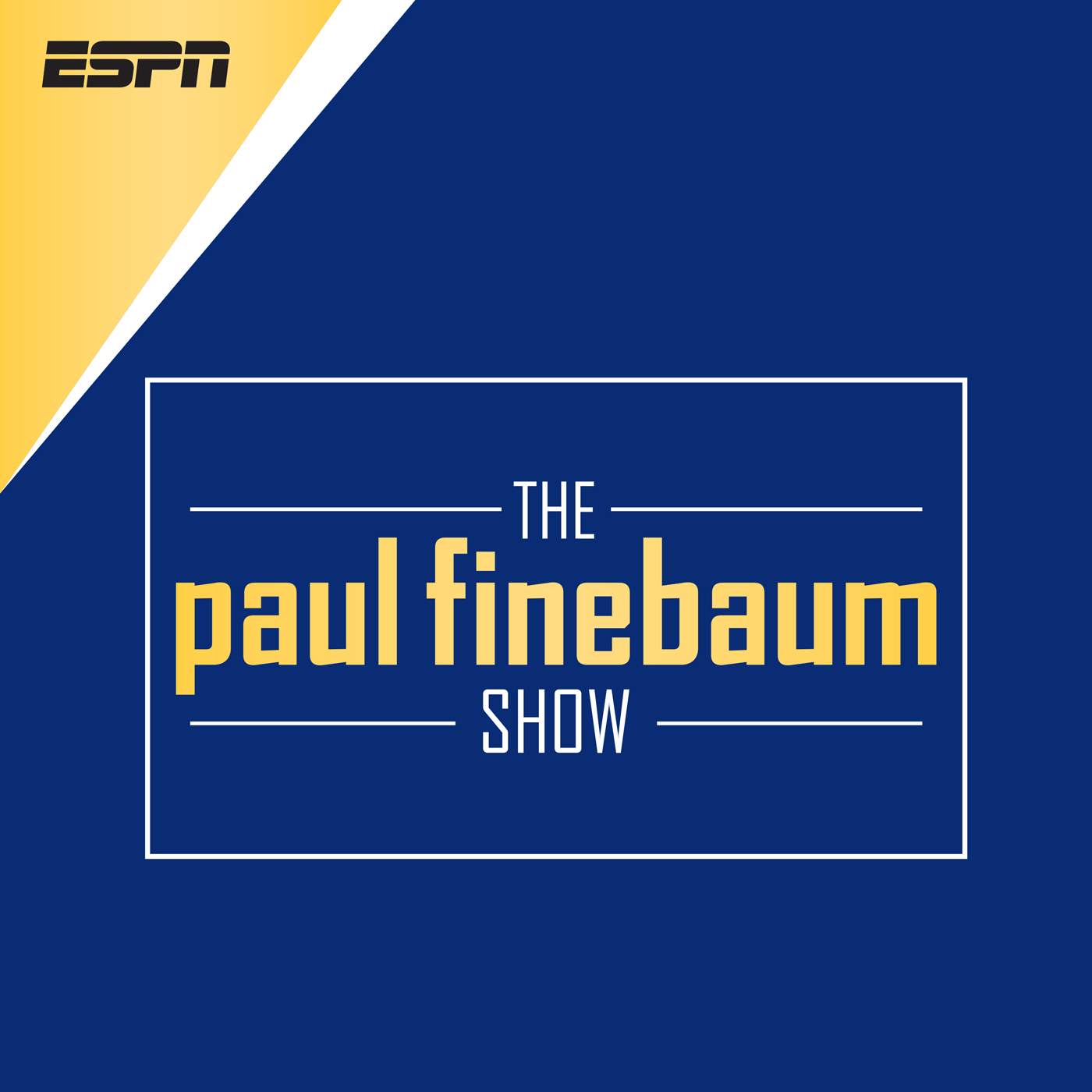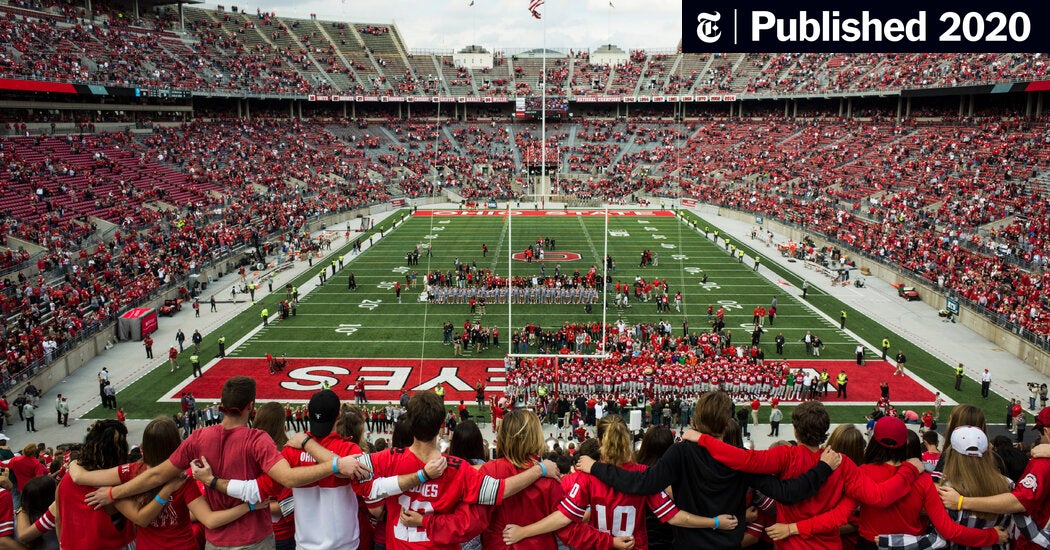18Champs
Member

'It's a F------ Mess': On Doctors, Decisions and COVID-19
How is it that the Big Ten and Pac-12 deemed it too unsafe to play this fall based on medical experts, but others are pressing on?
The first thing to pop into Greg Stewart’s mind was an anxiety-filled question.
Why did they shut down?
This was Tuesday, a historic day in college football, when storied college conferences, the Big Ten and Pac-12, announced the cancellation of fall football. Stewart, the team doctor at Tulane, doesn’t exactly remember where he was or what he was doing. He does, however, remember what he said internally.
“Is there something that they know that we don’t?” asks Stewart, the American Athletic Conference’s lead COVID-19 medical chief. “When someone in the Power 5 shuts down, I need to understand the why. If it’s something we haven’t thought about, then that’s important. It’s not a resource thing, so what is it?”
The data, aside from variations in regional virus case numbers, is virtually the same. For the most part, schools are adhering to the same testing, quarantine and mitigation protocols. In fact, COVID-19 numbers on many teams seemed to have leveled off over the last several weeks. Some programs had even started fall camp—without much issue—and many others were easing into a more normal preseason practice regimen.
The Big Ten, just six days before the shutdown, had announced its 2020 schedule, and the Pac-12 had released its conference-only slate just five days before that. When they both pulled the figurative trigger on a 2020 fall football season, the dominoes that many expected to follow—the Big 12, then the ACC, then everyone else—never toppled.
While the medical boards advising the Big Ten and Pac-12 recommended halting activities, similar medical panels for the other six conferences supported those leagues plowing ahead. There were sparring statements from each side. “In my view, no reasonable-minded individual could have listened to the facts presented by our medical experts and believed that we had any other option at this time,” USC athletic director Mike Bohn said in a letter to fans after the Pac-12 canceled its fall season.
That same day, Big 12 commissioner Bob Bowlsby and his presidents decided to continue toward a fall season. “Reasonable people can disagree on it,” he said. “The Pac-12 and the Big Ten are seeing much of the same information that we're seeing. But our board believes in our scientists and has come to a conclusion that is different and so have the leadership of the SEC and the ACC.”
How is this possible?
A host of medical professionals spoke to Sports Illustrated in an attempt to answer that question. They include Pac-12 and Big Ten physicians who gave the shutdown recommendation, SEC and AAC medical advisers who favor a march forward, one of the NCAA’s top COVID-19 experts and various independent practitioners.
So what’s the answer to that question? There isn’t one. There are several. Why two medical boards ruled quite the exact opposite of others, with the same data, in the same country, about the same sport, while performing the same protocols, is not easily explained.
In such a vast nation with differing cultural ideals and local policies, factors include regionalization and politicization. But one of the most pertinent answers to the question? Risk tolerance.
“The other conferences all understand there is a high risk,” says Boris Lushniak, a member of the Big Ten’s COVID-19 advisory group and squarely in the camp against playing a fall season. “They think they can deal with it. Do they have the answer to the unknowns? They really don’t, which means it’s on the spectrum of risk-taking behavior.
“I can’t tell people, ‘You are doing the wrong thing.’ What I can tell people is, ‘You’re doing a risky thing.’”
*****
If the SEC kicked off the season this weekend, Catherine O’Neal doesn’t know if she’d approve such an endeavor. And that’s O.K., because the SEC does not play a game this weekend. Nor does it play a game next week or even in a month. That’s why the SEC, unlike its western and midwestern brethren, hasn’t shut down athletics. Using a patient and phased approach, the league isn’t skipping steps. Voluntary summer workouts turned into required workouts which became enhanced training and, next week, will arrive at full-contact practice.
The league’s medical panel cleared teams for each one of the steps. It has not yet cleared the conference to play a season.
“I can’t speak for the other medical task forces, but from our perspective, our questions have been very cautious about what is happening today and what’s happening the next couple of weeks,” says O’Neal, an infectious disease physician in Baton Rouge and the leading voice on the league’s medical panel. “We haven’t dared to address what’s happening in a month or two months. We say that every time we meet: ‘Things are going to change so rapidly. Let’s proceed cautiously and re-evaluate.’
“I have to assume from media releases that the other conferences decided to have a more long-term perspective: ‘This doesn’t seem like we can do it,’” O’Neal says. “From our perspective, we haven’t addressed that long-term view as a medical task force.”
The Big Ten’s timeline was on a different track than the SEC, which is kicking off its conference-only season Sept. 26. The Big Ten was scheduled to kick off Sept. 3, while the Pac-12 had the same kickoff date as the SEC.
Lushniak, the dean of public health at Maryland and the former acting surgeon general, describes the timing of the decision as necessary for a preparation perspective. Big Ten teams were entering or had already started fall camp.
The Big Ten’s decision, while encompassing several considerations, centered clearly around one issue: the fear of the unknown. Recovered COVID-19 patients, even young athletes, are experiencing lingering impacts to vital organs, most notably the heart, details of which were reported Sunday in SI.
During joint calls with Big Ten leaders, physicians didn’t have answers to questions about this issue and others, says Lushniak. Why? He says there are no real answers to particulars about a virus that was introduced to the world just eight months ago. “As a physician, it’s really what I don’t know about the virus that scares me. I don’t know long-term health effects,” he says. “What’s it do to that athlete’s heart? I can’t just say, ‘Go out and play this game and put yourself at higher risk.’”
Amesh Adalja is a senior scholar at Johns Hopkins University and an infectious disease physician who sits on the NCAA COVID-19 advisory panel. He acknowledges that risk tolerance is a significant part of the decision making. “Any activity we do in the era of the pandemic is going to be dictated by what risk tolerance you personally have.”
Universities are sprinkled throughout the nation in regions that are culturally and politically dissimilar from one another. The debate over college athletics is, in a way, a microcosm of society in general. Reopening segments of the economy come with their own risks. The latest example of such is the return of secondary and primary education. Some school districts are returning to classes—a risk—while others are continuing virtual learning—little risk.
This works at the college level, too. In fact just Thursday, Stanford announced it would not open campus for any in-person classes this fall. Meanwhile, the University of Florida will soon welcome more than 50,000 students back to campus. Not-so-coincidentally, Stanford is located in the heart of Pac-12 country on the west coast and Florida is an SEC powerhouse in the Deep south.
A color-coded map identifying states by their football situation shows a striking similarity to a map you might see on an election night. The relaxed COVID-19 regulations in conservative states have allowed their football teams more and easier access in a sport in which contact is imperative. Liberal states, especially California, have been playing catch up. Case in point: just last week UCLA coaches were allowed to return to the office. In Baton Rouge, LSU coaches have been working out of the office since May.
Medical advisory boards report to a conference’s board of directors, encompassed by school presidents. They are the ultimate decision-makers, often themselves in a political situation. They answer to a board of trustees and the governor of the state.
“Of course it’s a political situation, which is tragic,” says Mark Cullen, a former Yale and current Stanford epidemiologist who has spent his entire career as a researcher in work-related chronic disease. “This should not be politicized.”
*****
The Pac-12’s medical advisory board looks different than any other conference’s panel. It includes more than a dozen independent infectious disease physicians and public health practitioners, some of whom do not work in athletics, says Doug Aukerman, Oregon State’s team doctor and the chair of the board.
After the presidents’ vote on Tuesday to shut down the season, Aukerman’s group released a detailed 12-page document of in-season protocols that, in conclusion, conference members could not meet. The league made its decision based on three factors: (1) the high community virus prevalence in its footprint; (2) emerging long-term health concerns, including the heart issues; and (3) unattainable testing frequency needed because of Point No. 1.
He was asked how his board reached its conclusion when other conference panels contend it’s safe. “I can’t address what other doctors are thinking or how they’ve arrived at their decisions,” he says. “There is sufficient concern. The lack of control in our communities and the potential unknown medical consequences that we are learning about and don’t know enough about… that’s how we arrived at our recommendations.”
The Pac-12’s risk tolerance is even lower than the Big Ten’s. Its medical document takes a strict and conservative approach to testing frequency. The league’s advisory panel recommends daily testing of athletes and staff for communities within the conference experiencing what it calls “uncontrolled spread” and testing every other day for those in zones of “dangerous spread.”
Those labels are determined by the number of new cases per day on a 7–14 day rolling average. In addition to that, the Pac-12 wanted its schools to test 24 hours before each competition.
Other physicians who examined the Pac-12’s document see it as overly cautious. The Power 5 medical protocols call for testing three days before a game, and most college programs plan to conduct testing three times per week. “You take the science and apply it to your circumstances. The Pac-12 chose to test more frequently than anyone else,” says Stewart, the AAC lead COVID medical chief. “Is it wrong? No, but it’s just different. We think our testing protocol is sufficient and they don’t.”
The Pac-12’s testing requirements are rooted in community spread. The amount of cases in a community raises the frequency of the necessary testing, which then makes more difficult the availability of testing and its return time. It’s a domino effect. Pac-12 leaders are attempting to protect a community from athletes and protect athletes from a community. The same goes for the Big Ten. “How can I stick my head in the sand and just pretend as if the community is not being affected?” asks Lushniak.
Optics are a problem too. The athletes are engaging in contact behavior that goes against many state and local regulations, at least out West. “This virus does not stop at the edge of a practice field,” says Aukerman. “It does not stop at the edge of a university campus.”
While the Pac-12 cites high community cases for a shutdown, the SEC actually is seeing even higher numbers. Counties in which Pac-12 schools reside are averaging 1,153 cases, according to numbers compiled from COVID-19 data. Counties in which SEC programs reside are averaging nearly 1,900 positives.
However, there is a glimmer of hope. During an interview with SI, O’Neal, the Baton Rouge-based physician on the SEC’s medical board, believes that a specific advancement in testing could further move the conference closer to a kickoff. The advancement, pooled testing, isn’t necessarily new, but it is improving its efficiency and becoming more widely used. At least two SEC schools, LSU and Florida, are using pooled testing to ensure a virus-free campus as regular students return. Soon, it will be used in athletics.
Pooled testing allows physicians to test multiple samples in a single vile. Imagine a nasal swab from 20 offensive linemen being administered as a single test. If there are no positives, the entire group is cleared having used the resources—staffing and equipment—of one test. Testing equipment is one of the areas that physicians are experiencing a shortage, O’Neal says. Pooled testing not only stretches resources but results in quicker return times.
“It’s huge,” says O’Neal. “This will push us all forward faster.”
Testing is essential to identifying cases and slowing the spread. “If the testing problem can be solved, we could be in a different place,” says Adalja, the physician who sits on the NCAA panel.
While Lushniak believes pooled testing is important, he says it’s no “panacea.” He says another kind of testing is necessary for a football season: quick, accurate point-of-care or self-administered tests. He hopes the Big Ten’s decision to postpone the season to the spring buys time for such advancements to be made.
But like most issues these days, there are disagreements—including from doctors. “They’re trying to play in the spring, which I’m not sure is brilliant,” says Cullen, the Stanford epidemiologist. “I’m not sure we’re going to be done with this by spring.”
One team doctor, speaking on condition of anonymity, about the warring medical experts within college athletics: “The NCAA should have pulled the doctors together to begin with. It’s a f------ mess.”
*****
On Thursday morning, the NCAA’s chief medical official, Brain Hainline, joined other physicians as part of a roundtable discussion. Many of their comments centered around the difficulties of playing football in the fall. Some of their quotes were striking. The remaining six conferences are delaying the inevitable, surmised Carlos Del Rio, a professor for global health at Emory University.
“I feel like the Titanic. I feel like we have hit the iceberg, and we are making decisions about when we should have the band play,” Del Rio deadpanned.
Just one day earlier, the ACC’s chair of its COVID-19 medical panel told Sports Business Journal that football can be played safely. “We believe we can mitigate it down to a level that makes everyone safe,” said Cameron Wolfe, a Duke infectious disease specialist.
So what gives? The novelty of the virus is at the heart of the debate. There isn’t enough information known on either side of the argument, doctors say.
Cullen, on the side of canceling fall sports, believes physicians are coming to different conclusions because they are interpreting the data differently, potentially due to an underlying motivation, political or regional, he presumes. An SEC team doctor, speaking on a condition of anonymity, contends that the Big Ten and Pac-12 made their decisions far too early.
“By kicking the can down the road, we’re trying to wait on two things: (1) students to come back on campus and (2) the NFL to get started,” the doctor said. “I don’t understand why the plug was pulled.”
But even on that, the doctors don’t agree.
In an interview with SI this week, Adalja, the NCAA’s own medical board member, suggests that college football teams choosing to play this fall will experience, because of travel, even more problems than those recently in Major League Baseball. Game interruptions. Mass outbreaks. Whole teams quarantined. “If MLB couldn’t do it with athletes paid millions of dollars to stay healthy,” he says, “it’s hard to see unpaid college players doing this.”
Though he’s disturbed by the thought, Cullen believes college football will at some point have its Rudy Gobert moment. The Utah Jazz player’s contraction of the virus in March sent the sports world to a halt. “The way it’s going to play out is there will be a tragic case,” Cullen says. “For the benefit of many, maybe it happens sooner than later.”
What happened Thursday in college football irked many administrators who want to play a fall football season. For one, the NCAA rolled out their doctors for a gloomy news conference and then followed that in the afternoon by announcing the cancellation of fall sports championships.
Is NCAA president Mark Emmert and his team attempting to pressure the six football conference to call it quits?
Many believe that’s the case. “Stop with this passive aggressive bulls---,” says one athletic director whose school is marching toward a fall kickoff.
The divisiveness within America has filtered into college athletics, even to the medical community. The physicians can’t agree. And their opinions are under attack because of their colleagues’ decisions.
Meanwhile, the NCAA, aside from releasing guidelines, has mostly removed itself from the ordeal. Instead of making cohesive medical decisions under one ruling board of physicians, college football’s fall fate will be determined among various medical boards, each with differing opinions, political beliefs and, above all, risk tolerance.
“Clearly we have some conferences that have greater risk tolerance than others,” says a high-ranking college leader. “That’s what it comes down to. Who knows who’s right and who knows who’s wrong? Who the hell knows?”



